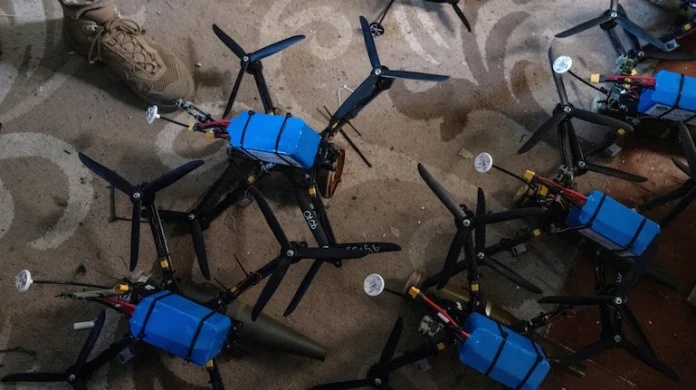Ukrainian drone maker Skyeton has accused several European firms of copying its technology and misrepresenting their own drone capabilities. These companies allegedly visited Skyeton posing as potential partners, then reused technical information and even copied exact phrases from the firm’s materials.
Skyeton’s flagship Raybird drone has flown over 350,000 combat hours. Unlike many newcomers in the market, its systems operate in real war zones and are refined based on frontline feedback. The drones can fly up to 2,500 kilometres and remain airborne for 28 hours, carrying a variety of payloads such as surveillance cameras and radio frequency sensors.
Fake combat claims and drone copying
According to Skyeton CEO Roman Knyazhenko, some Western manufacturers used partnership discussions to collect technical insights. They later disappeared without follow-up, only to present very similar systems as their own.
He pointed out that many of these companies conducted test flights far from any active combat. Some operated briefly in western Ukraine, yet still claimed their drones were “combat-proven.” Despite the limited testing, they secured large government contracts.
“These firms often show polished presentations that claim they’ve worked in Ukraine,” Knyazhenko said. “In truth, they flew just a few missions in places like Lviv. Sometimes I even see my own words copied without change.”
He warned that this practice results in billions being spent on untested or poorly performing systems. That money, he said, could have gone to Ukrainian-made drones that have been proven under fire.
Innovation under pressure
Skyeton’s 500-person team works non-stop to meet the demands of the Ukrainian army. The company replaces components frequently to improve stealth, durability and mission range. Because of the pace of war, many features evolve weekly.
“In peacetime, a repair might take a month. Now we do it overnight,” Knyazhenko explained. “If the drone isn’t back in the air the next day, we risk casualties.”
Skyeton engineers have also adjusted launch systems, enabling drones to take off in muddy or flooded conditions. The firm believes this kind of rapid development can’t be copied overnight by companies that lack direct combat experience.
Quality issues and delays with foreign parts
Knyazhenko shared examples of quality problems with imported components. In one case, a shipment of gimbal cameras arrived with half of the units non-functional. Test records showed they were faulty before they even left the factory, yet the supplier denied responsibility. Legal action, he said, would take years—time the military simply doesn’t have.
“Every day of delay costs us equipment, and sometimes lives,” he said. “That’s why we’ve started making more components ourselves.”
Ukraine’s advantage in the drone race
He also warned Western firms against assuming that visiting a Ukrainian drone factory is enough to replicate its success. “It’s like trying to build a BMW from scratch. It takes years of trial, error and refinement,” he said.
Skyeton argues that instead of investing in untested start-ups, Western governments should support Ukrainian production directly. Establishing Ukrainian drone factories abroad, with proven technology and teams, would be faster and more reliable.
A wider perspective
Several analysts note Ukraine’s significant advances in drone warfare technology. Former US officials have suggested that the United States faces challenges in some areas of UAV development. At the same time, some Western countries have encountered difficulties in producing cost-effective drone systems. For instance, the UK reportedly invested £1.35 billion in drones that were later withdrawn due to reliability concerns.
Meanwhile, Ukraine’s drone industry has experienced rapid growth, with reports indicating an increase of around 900% over the past year. The ongoing conflict appears to be driving continuous innovation, contributing to developments in the sector.
